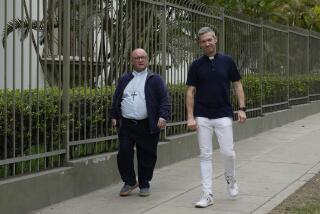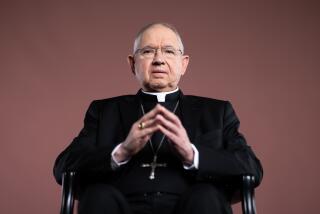Latin Church: Clout Cleansed of Politics
- Share via
Nelson Rockefeller predicted in 1969 that the Roman Catholic church would be a principal actor in Latin America’s coming political drama. That same year, a Rand Corp. study of the church in Latin America disputed Rockefeller’s claim, holding that the church was much too dispersed in its energies and subject to ideological and class-based cross-pressures to exert much political clout.
History proved--and headlines continue to prove--Rockefeller the better prophet.
The church’s impact on social change in the vast territory of Latin America began after the second Vatican Council ended in 1965. A specifically Latin American application of the council’s teachings led gradually to theological reinterpretation of social realities. From this, three key theological concepts emerged: evangelization of the poor, structural sin and liberation.
Evangelization was the bishops’ response to the proliferation of Pentecostal activities, and to a new post-Vatican II awareness of the poor. The bishops became aware that the bulk of Central and South America’s inhabitants--the poor and marginalized indigenous peoples--had never really heard the full Gospel message. Through new, far-reaching evangelization programs, the bishops, for the first time, recognized the harsh realities of government neglect of the poor in jobs, health and education. At present, 60% of all nuns and religious-order priests work with the urban or rural poor. Through their eyes the church has been rereading the Gospel.
The idea of structural sin focuses on institutionalized injustices such as torture, unfair land distribution patterns, unjust wages and abuse of human rights. Sin is not merely personal but systemic. In meetings at Medellin (1968) and Puebla (1979) the bishops solidified the idea that an unjust society is a sinful society marked by twin evils: political/economic dominance by the North Atlantic countries, and internal colonialism of the rich over the poor.
The bishops draw the necessary pastoral conclusions. Liberation from unjust structures is integral to the Gospel’s call to freedom from sin. The pastoral letters of the episcopacy over the past 10 years reveal a consistent liberation motif. The bishops call for an end to repression and torture, a more equitable distribution of land, promotion of labor unions and organizations for the poor, just prices for raw materials on world market. The bishops’ program envisions nothing short of a revolution to promote the dignity of the poor--not the Marxist class struggle but a nonviolent realization of what Pope John Paul II calls “the society of love.”
New structures and pastoral strategies undergird these new ideas. The most important new structure is the grass-roots movement: individualized community church groups that attempt to train lay leaders, provide new ministries and instruct in the Catholic faith in depth. Base communities are an ingenious combination of intense Bible-study and worship with organizing in demands for basic services. An estimated 2 million to 3 million church members have experienced this intense evangelization and social awareness.
Sociologist Max Weber once spoke of the great political impact of religious groups that see transformation of society as part of their religious vocation. Another sociological insight is the observation that trained church lay leaders gain communication and organization skills that translate into secular political life.
There are dangers in the new pastoral strategy. The theologically based vision of a more just society might be manipulated by more partisan, ideological groups, as the Sandinistas have done in Nicaragua. The preference for the poor might narrow the church into a sect, alienating the middle classes. Church involvement might overly moralize pragmatic secular politics. Grass-roots groups might break away from episcopal control.
The bishops recognize these dangers. They speak of two kinds of politics, one of them inappropriate for the church. The balance lies in how to be political in the broad moral sense of faithfulness to the Gospel politics of justice for the poor, without becoming mere partisans immersed in power politics. The bishops have gambled that they can keep these distinctions straight and ward off the dangers.
Rome is watching the effort. The Pope basically supports this new pastoral gamble. He enunciates the themes of preference for the poor, denounces violence and torture, decries the rich nations’ exploitation of Latin America. He also warns priests to avoid becoming partisan politicians and frets over theologians he suspects of wanting to replace the true Gospel with secular political myth. But his words and gestures underscore the political implications of a Gospel that upholds the dignity of the poor and their right to basic human resources and full participation in society.
Rockefeller’s prediction about the church’s role in the political drama is still evolving. In Peru, Argentina and Brazil, the church holds its own even as the military is discredited. In Peru and Brazil the church continues to push the civilian governments to redistribute land and stop torture. The church’s creative moral political role will continue only if it follows the broad lead of Pope John Paul II and seeks the high road of moral principle and solidarity in accompanying the poor and leaves details to the politicians.
How the church keeps the balance will be subject for review again on the Pope’s next, perhaps most dramatic trip to Latin America--when he visits Pinochet’s Chile in the coming year.
More to Read
Sign up for Essential California
The most important California stories and recommendations in your inbox every morning.
You may occasionally receive promotional content from the Los Angeles Times.










